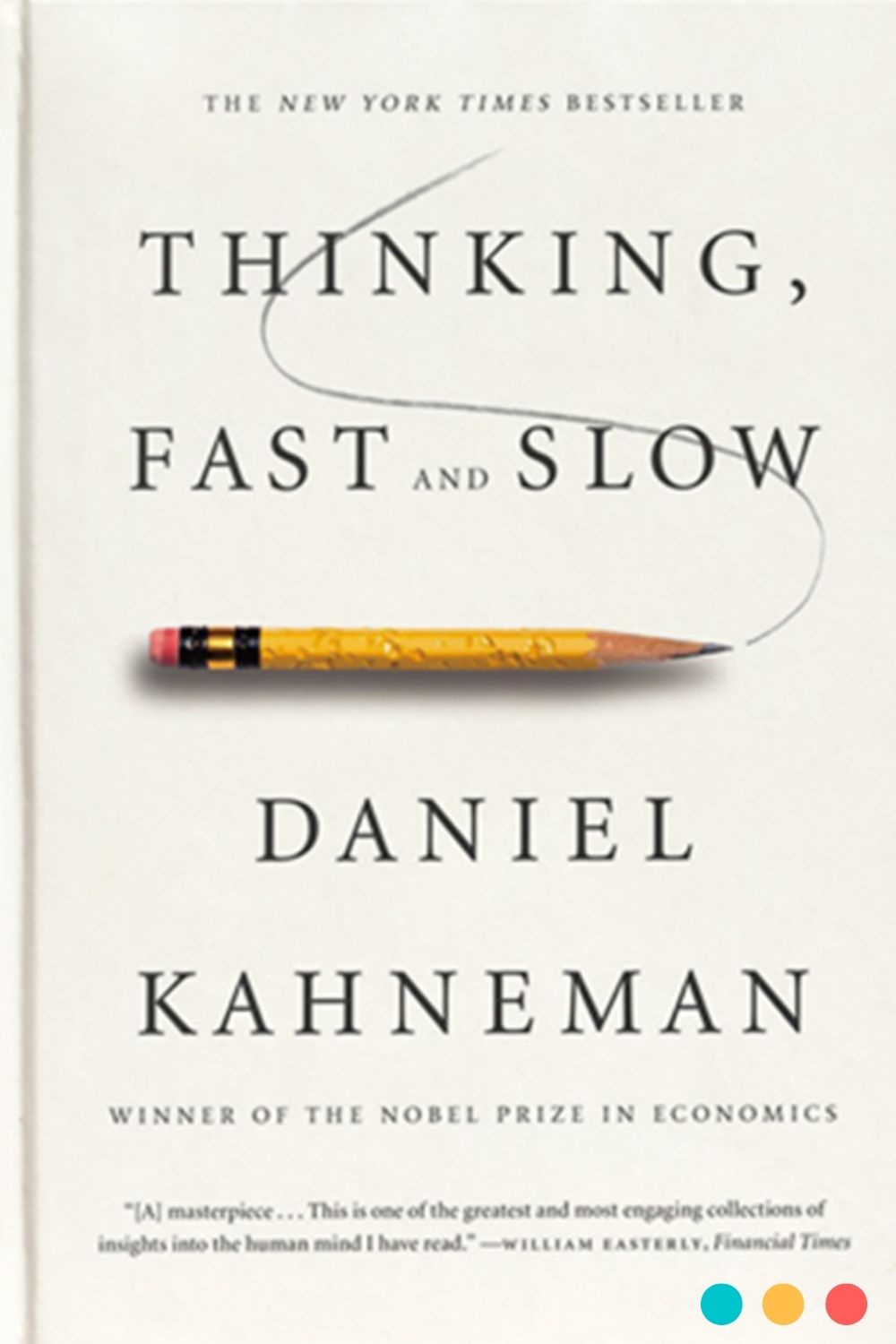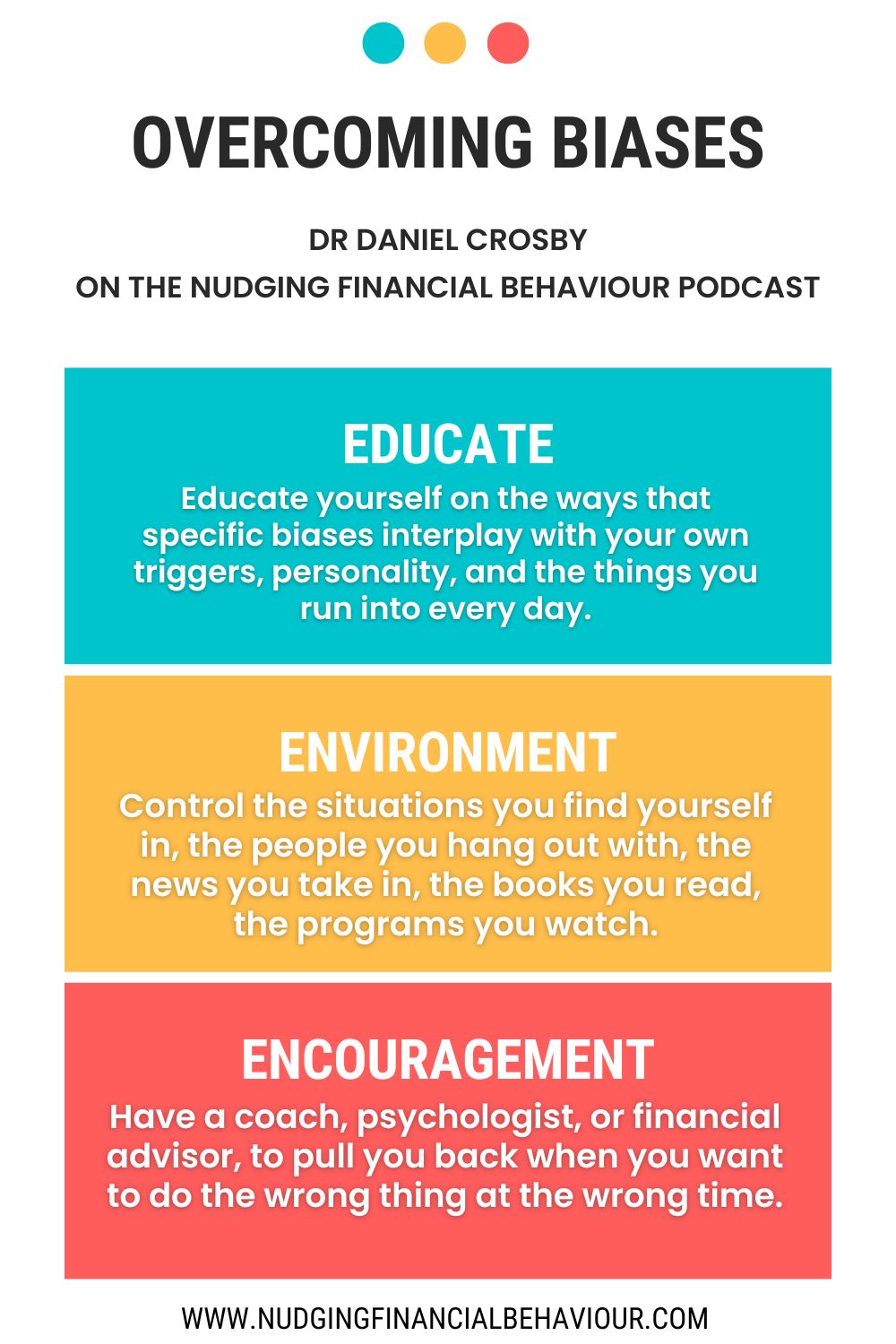Automatic and effortful processing involve two types of thinking… fast and slow… system 1 and system 2. In this post we share some system 1 and system 2 thinking examples to show you how thinking works in the brain. We also chat to New York Times best-selling author in behavioural finance, Dr Daniel Crosby. He shares his thoughts on this complex thought process as well as some tips to overcome behavioural biases that arise from system 1 and system 2 thinking.
In this series, it is our goal to help you recognise the biases that can subtly – and sometimes not so subtly – pull or push your thinking into making decisions about your finances that aren’t entirely rational. When you’re able to recognise these pushes and pulls, you’ll be able to make smarter choices about your money, and hopefully end up saving and earning more.
In the previous posts, we spoke a lot about human nature and the common pitfalls that get us into financial trouble. Now… I want to start digging a little deeper into human behaviour so that we can see what it is that we’re working with when it comes to human nature. In this post, we’re delving into what biases actually are and trying to understand how we make decisions about our money.
You can choose to continue reading, or you can watch this episode on our YouTube channel or you can listen to it on your favourite podcast platform. So many options. One of them should work for you.
To begin, let’s do a quick quiz. There are three questions. Grab a pen and paper, or open up the note app on your phone or computer – then write down the first intuitive answer that comes to mind.
Are you ready for the answers?
Okay, that last one is a little bit of a brain teaser but it still catches most people out. If you got some or all of the answers wrong, don’t worry, most people do.
Remember I told you not to think about it too much and just write down, or shout out, the first answers that came to mind? That was because I was forcing you to use your quick, System 1 thinking.
And with this in mind, I can now introduce the concept of quick and slow thinking – also known as System 1 and System 2 thinking, with you.
If you’re wondering what quick and slow thinking has to do with personal finance habits and decision-making – don’t worry, I’m getting there. The reason I’m starting here is because I want to help you be aware of the workings of your brain. Your mental activities and cognitive illusions.

We’ve actually discussed fast and slow thinking in a previous post which you’re welcome to check out. It comes with another quiz in case you want to push your fast and slow thinking to the test again. But let me give you a quick summary of what System 1 and System 2 is all about.
The idea of System 1 and System 2 thinking was coined by Nobel Prize winner and psychologist Daniel Kahneman with his book – Thinking Fast and Slow – it’s a New York Times bestseller. Really interesting reading if you’re at all into behavioural science. It refers to the two operating systems in our brain: System 1 which is quick thinking, and System 2 which is slow thinking.
We’ve actually discussed fast and slow thinking in a previous post which you’re welcome to check out. It comes with another quiz in case you want to push your fast and slow thinking to the test again. But let me give you a quick summary of what System 1 and System 2 is all about.
The idea of System 1 and System 2 thinking was coined by Nobel Prize winner and psychologist Daniel Kahneman with his book – Thinking Fast and Slow – it’s a New York Times bestseller. Really interesting reading if you’re at all into behavioural science. It refers to the two operating systems in our brain: System 1 which is quick thinking, and System 2 which is slow thinking.

When you hear suspenseful music, your brain and your body automatically get ready for a surprise or a fright. Your brain uses past experiences with suspense or horror movies to prepare you for what is about to happen next. Now you’ve experienced fast thinking. It’s completely effortless. That’s automatic System 1.
But if I asked you to multiply 19 by 26 without using a calculator, something different happens. Your System 1 brain tells you that this is a maths problem. You could solve it if you had a bit of time.
But if you do try to solve the problem, your muscles will tense, your pupils will dilate, and your heart rate will increase. This is slow thinking – your System 2.
Now, this isn’t a bad thing that our brains work this way, with 95% of the thinking being done by System 1. Yes, you might feel a little foolish because of the answers that your fast-thinking brain came up with earlier, but your System 1 actually does a lot of really good work.

The problem comes in when we let our fast brain do too much of the work and we don’t stop to think about why we might be making certain decisions. Especially when our System 1 uses shortcuts to make decisions. These are known as heuristics.
These shortcuts are essentially our brain using past experience and the information readily available to provide quick context for a problem and then come up with a solution. Of course, this is fine if you’re deciding if you want your eggs fried or scrambled for breakfast. It’s not so great if you’re deciding where to invest your life savings. Heuristics don’t use a process model to examine the problem and probe the answer for flaws. This is where cognitive biases become a problem.
We asked Dr Daniel Crosby, Chief Behavioural Officer at Orion Advisor Solutions and the New York Times best-selling author of multiple books on behavioural finance, for his opinion on System 1 and System 2 thinking.
“It’s a useful simplification. But like most simplifications, it can get overextended. So I think a lot of times we use this simplification to say that system 1 is bad and system 2 is good. And that’s just not the case. System 1 has its place.
We rely on thinking fast because a lot of the decisions we make, and we make tens of thousands of decisions a day, are profoundly low stakes. Most of them can be performed on autopilot, and that saves us a lot of time and a lot of cognitive bandwith.
Your brain accounts for 2 to 3% of your body weight, but it accounts for about 25% of your metabolic expenditures in a given day. So is it a good thing? I think it’s a useful abbreviation. But it can get misapplied, it can get overextended, and I think that’s where we run into problems.”
We then discussed the origin of biases… considering whether they’re environmental or innate? Nature or nurture, or a bit of both? Here’s what he said:
So the sort of cop-out psychologist answer is that everything is bio-psycho-social, right? There’s an element of biology to it, there’s an element of psychology to it, and there’s an element of culture to it. But let me put some numbers to it.
Let’s look at the research on happiness. We find that about half of someone’s happiness is down to something called their genetic set point. So the same way that people have a set point with something like body weight or muscle composition, people have a set point with respect to their attitude and they’re more or less happy depending on their genes.
That sort of sucks to admit, right? Like that’s tough to admit that about half of our happiness is owing to mom and dad, but it is what it is, and there’s a strong nature component to this.
But if we look at the remaining 50%, it’s actually quite different than people thing. Of the remaining 50%, only about 10% is down to circumstances and what happens to you. The remaining 40% is down to the choices you make, you know, things like meditation, cognitive behavioural therapy, volitional choices that you make. So, even though about half, in the case of happiness, owes to genetic factors, there’s still almost another half that’s within our control, and usually much less depends on just sort of what happens to us.
This really shows the importance of the small choices we make and the impact they have. Finally, Dr Crosby gave us some closing advice on how to overcome these biases.
I have a three-part system for thinking about overcoming bias because I think it takes multiple legs of a stool to change behaviour. It’s three E’s.
The first of these is Education. We need to be educated about the ways that the specific biases interplay with our own triggers and our own personality and the things we run into every day.
The second E is Environment. You know, environment is critical, controlling the sort of situations we find ourselves in, even down to the people we hang out with. The types of news we take in, the books we read, the programs we watch, all have a material impact on the way we view the world and the way we move through the world. So, controlling and managing that environment is the second E.
And the final E is Encouragement. It’s having a coach, having a psychologist, having a financial advisor, because even when you’re putting yourself in a good environment, even when you’re well educated as to your predisposition to fall prey to these different biases, there’s still going to be moments where you want to do the wrong thing at the wrong time and you need that friend, that coach, that advisor to kind of pull you back and help you make sense of a tough situation.
So I think if you can get those three, surround yourself with good folks, put yourself in good situations and educate yourself. I think you’re a long way towards doing what you need to do.

Isn’t it great to hear from an expert that it really is possible to take control of our biases and do something to ensure that they don’t push us to make the wrong decisions? It was also interesting to hear that, despite the fact that some elements of our behaviour are genetic, we do actually have a lot more say in how we act and react than we often think we do.
I want to just go back to System 1 and System 2 thinking again. System 1 is very useful, we need it. This dual process has benefits. But the problem arises when we use System 1 instead of System 2 in situations where our slow-thinking brain would’ve been the better option.
I’m sure this has given you a lot to think about – and we haven’t even delved into the individual biases yet. What you can expect from future posts:
Some of these we’ve already touched on in previous posts, but we’re going to be getting a lot more in-depth and giving you examples of how these biases can impact the decisions you make about your money.
Thank you for sticking with us!
Narrow framing – Narrow framing, the compromise effect, glossing, and the enabling frame. We need frames to make sense of the world. But they cause problems.
The anchored trader – Anchors tie us down and can have serious consequences for investors and traders. Don’t be the anchored trader.
Let us know in the comments below.
Oxford university press has also published several decades of research on students by canadian and united states psychologists keith stanovich and richard west. They generate surprisingly complex patterns of human decision making. All rights reserved on the main content.
I am passionate about helping people understand their behaviour with money and gently nudging them to spend less and save more. I have several academic journal publications on investor behaviour, financial literacy and personal finance, and perfectly understand the biases that influence how we manage our money. This blog is where I break down those ideas and share my thinking. I’ll try to cover relevant topics that my readers bring to my attention. Please read, share, and comment. That’s how we spread knowledge and help both ourselves and others to become in control of our financial situations.

Dr Gizelle Willows
PhD and NRF-rating in Behavioural Finance
Receive gentle nudges from us:
[user_registration_form id=”8641″]
“Essentially, all models are wrong, but some are useful.” – George E.P. Box
